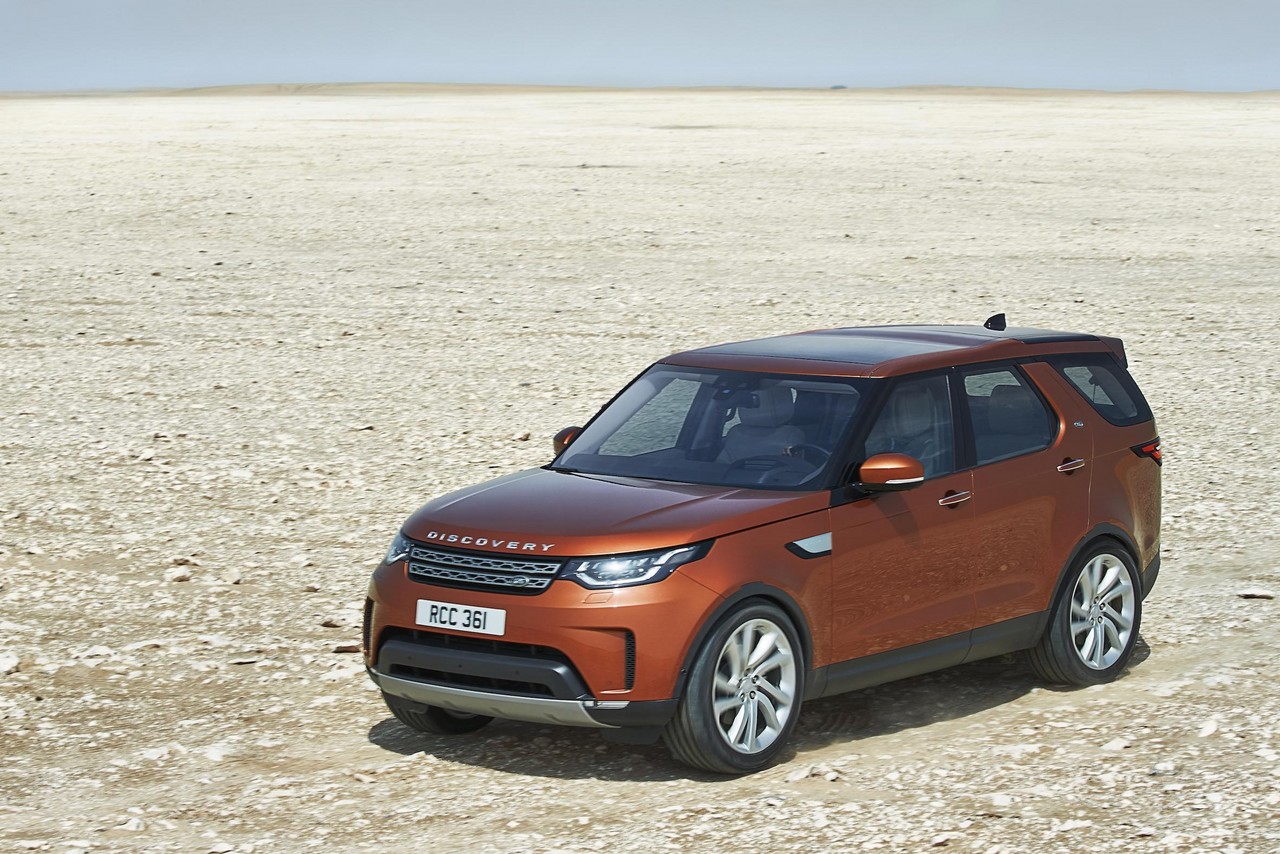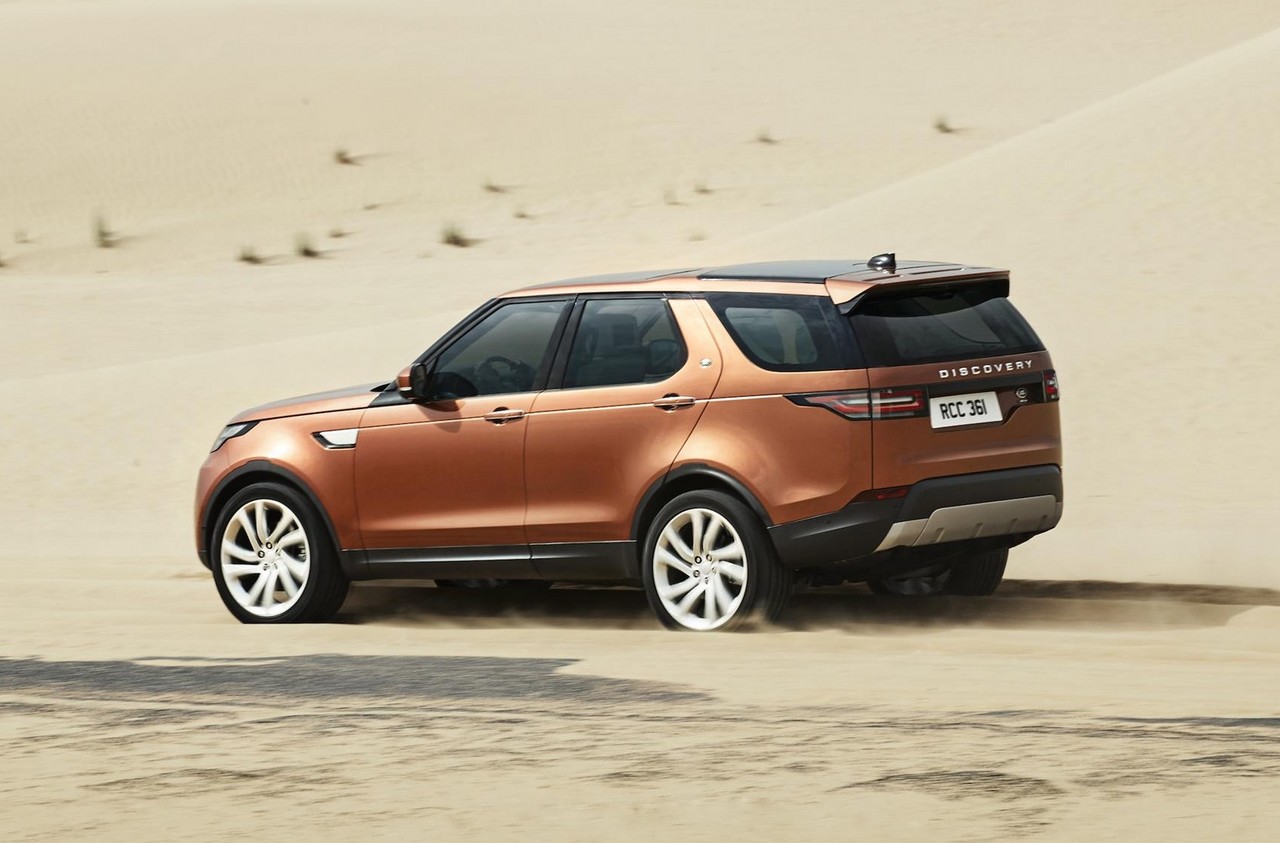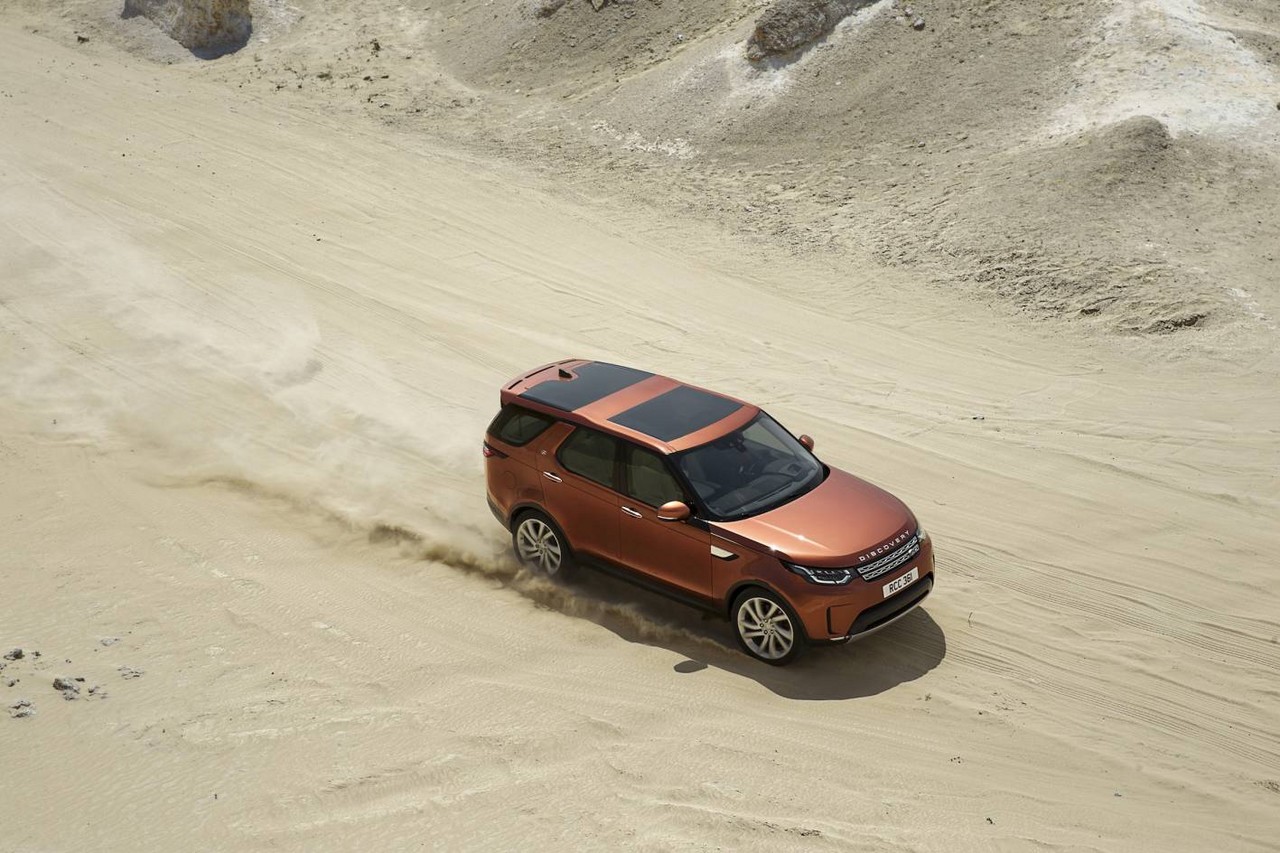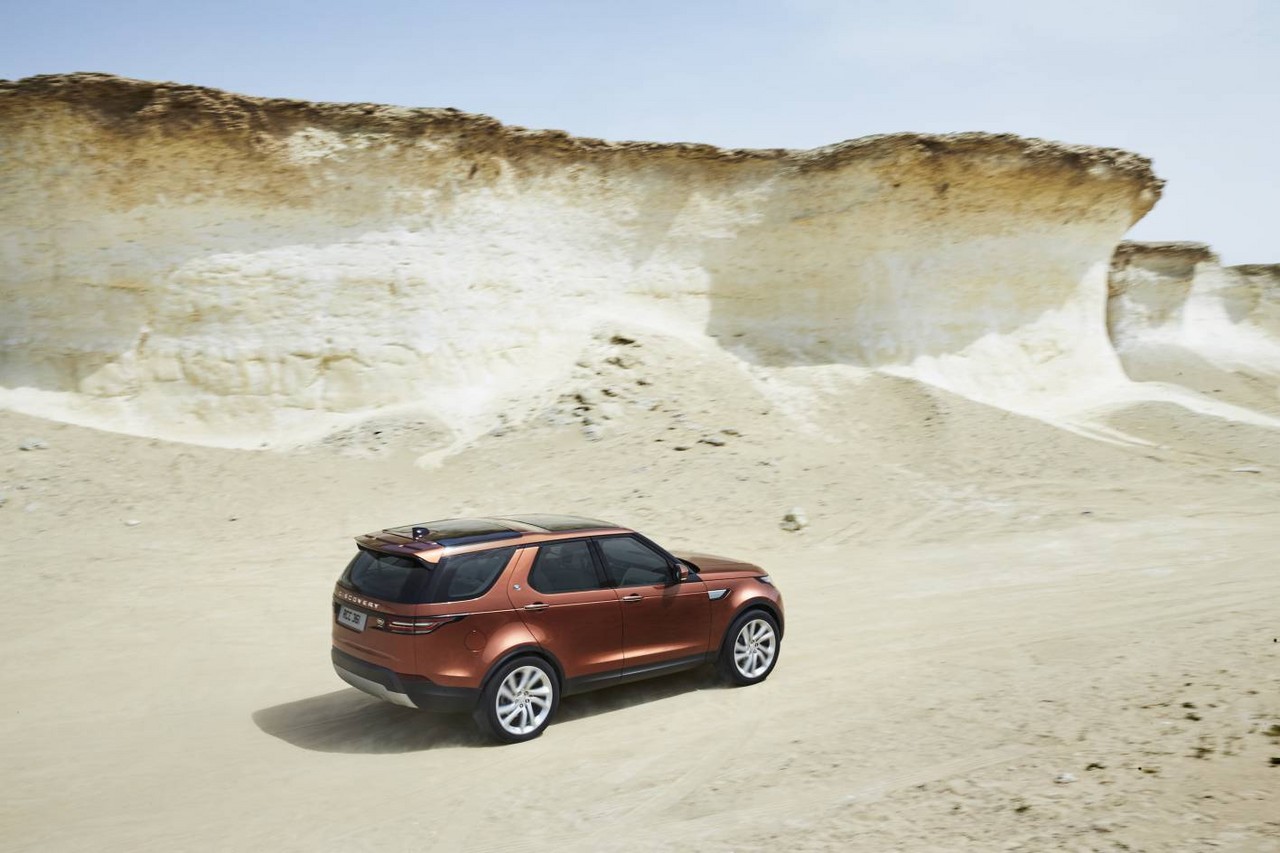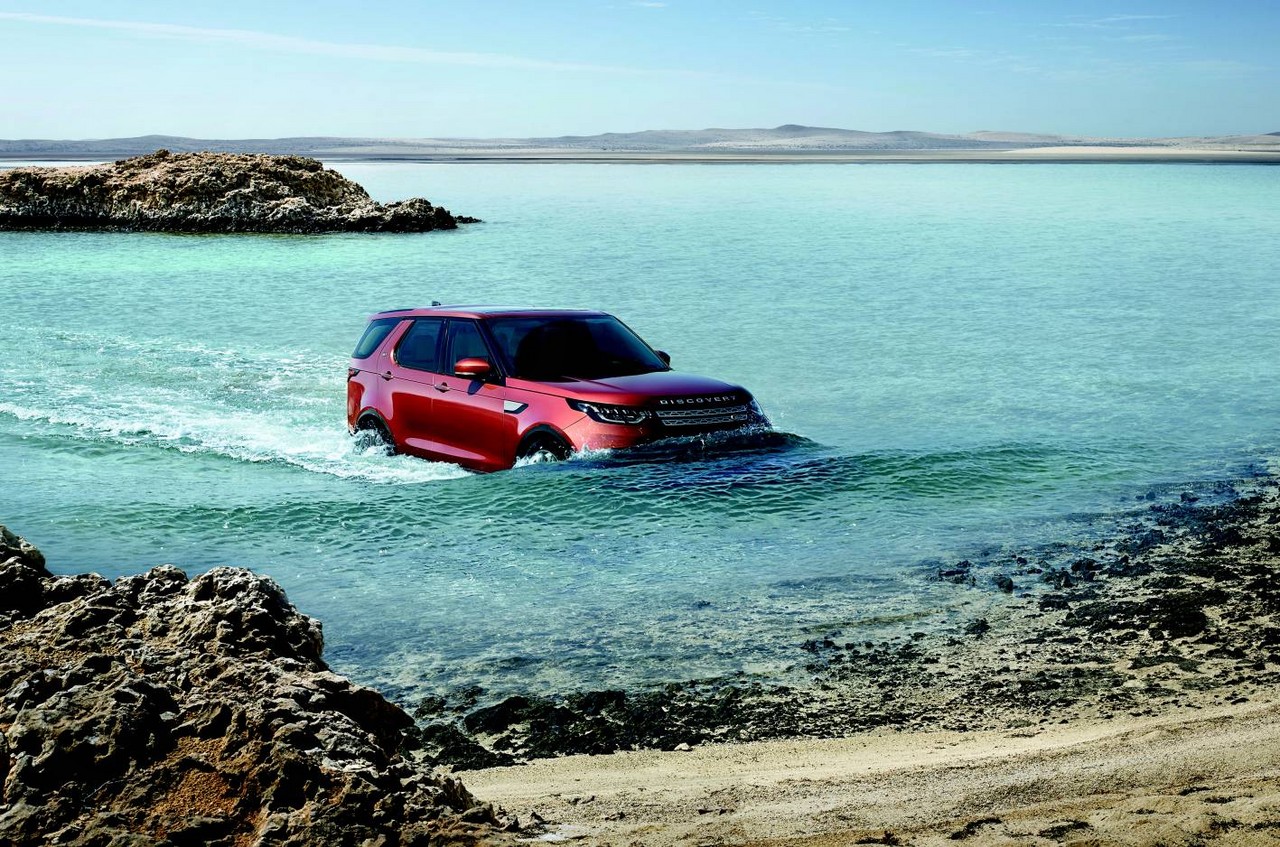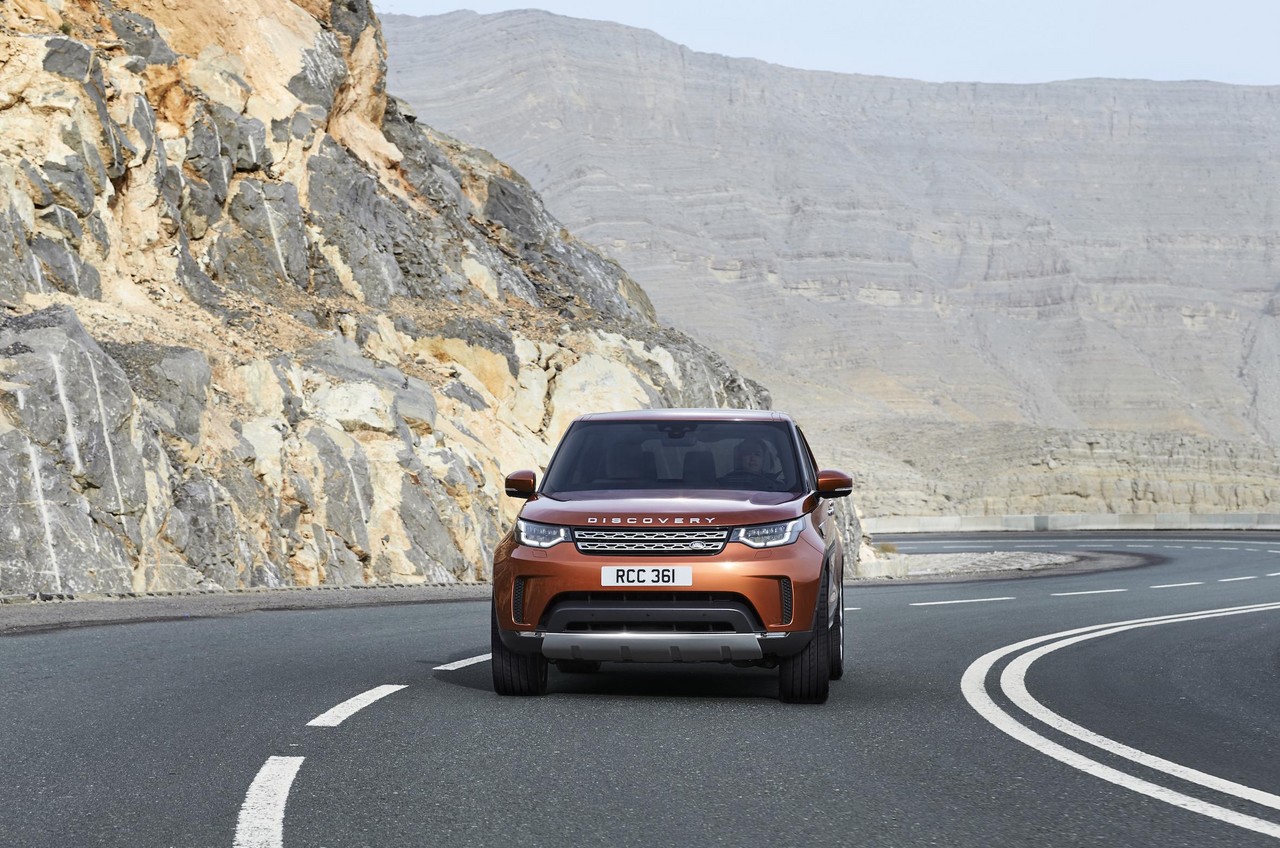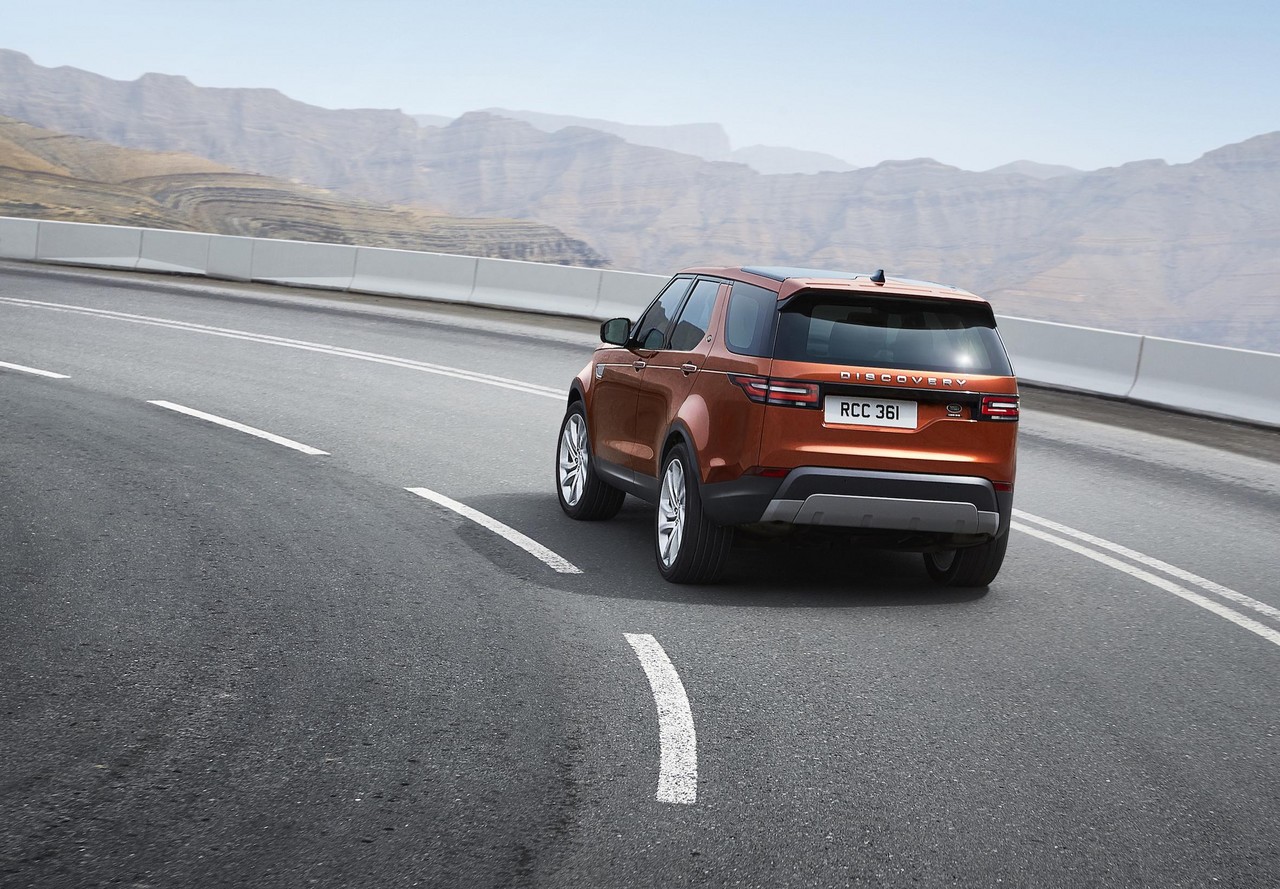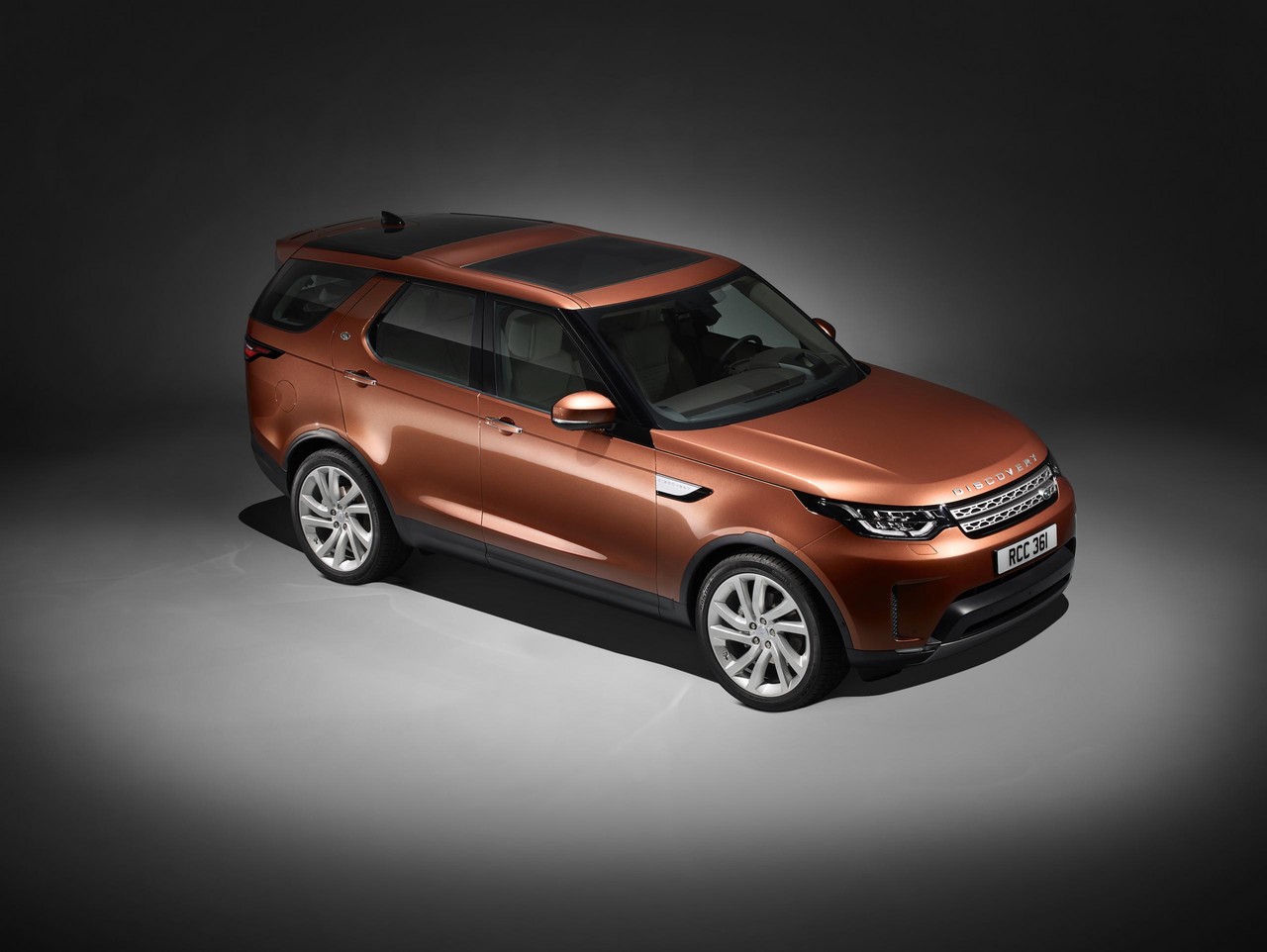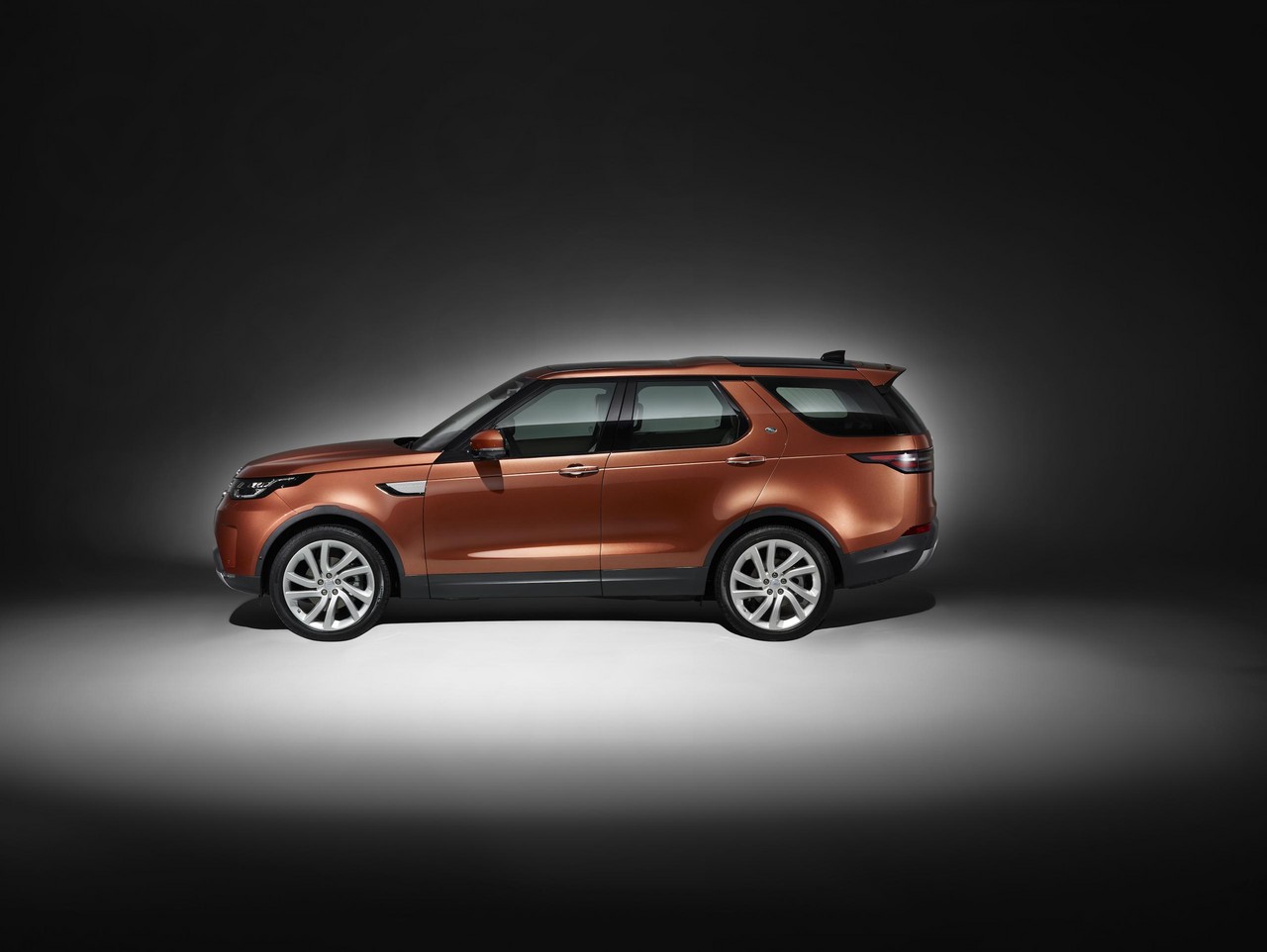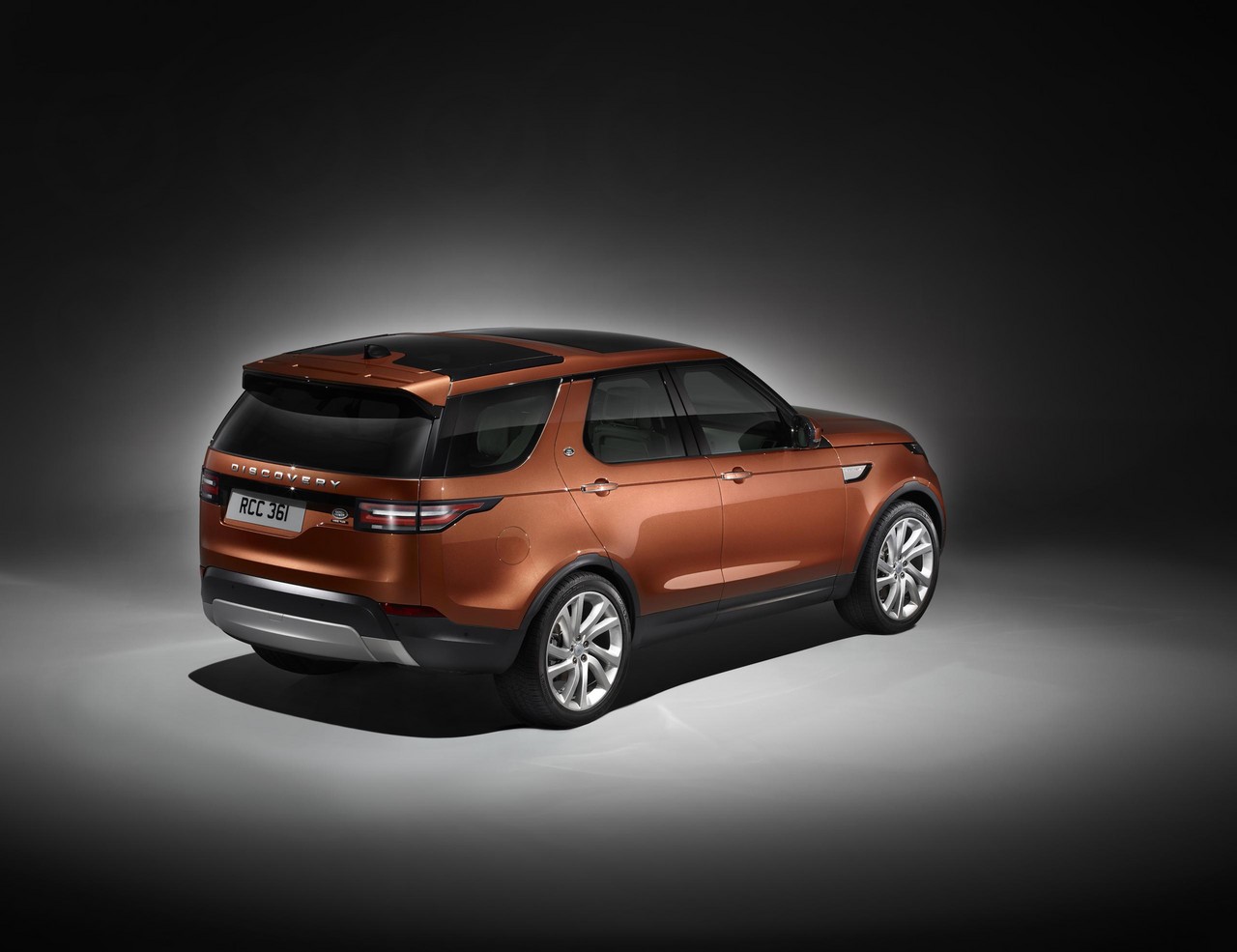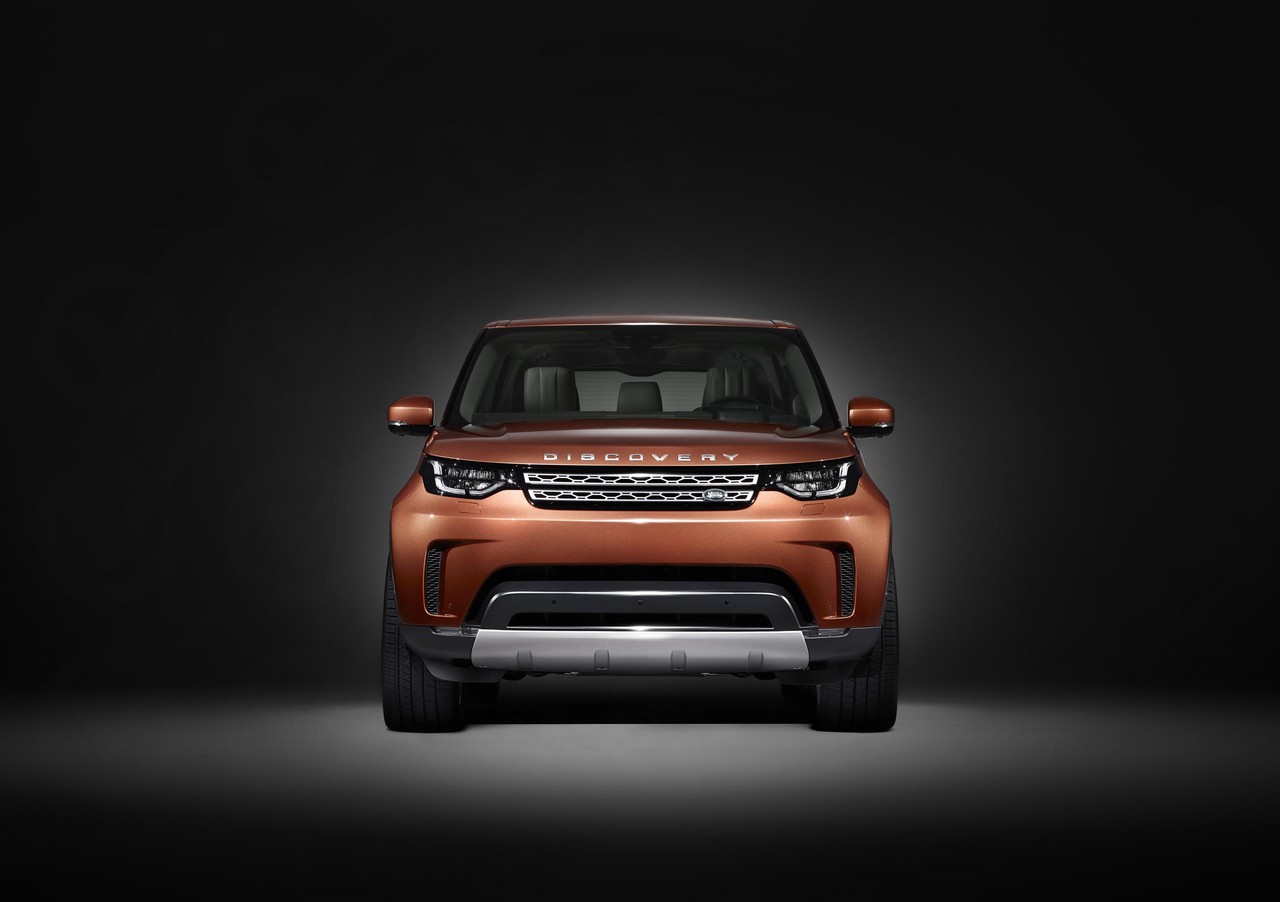
- Fuel-efficient diesel engines
- Off-road capability
- Air suspension provides comfortable ride
- Significantly light aluminium monocoque than ladder frame steel body of Discovery 4
- We’ll get back to you
Overview
Commencing production in December 2016, the Land Rover L462 Discovery 5 is a four-wheel drive wagon with seven-seats. Manufactured in Solihull, UK, the Land Rover Discovery 5 is available with 2.0-litre twin-turbo diesel, 3.0-litre V6 turbo diesel and 3.0-litre supercharged V6 petrol engines. Furthermore, the Discovery 5 range consists of S, SE, HSE and HSE Luxury editions.
Sd4, Td5 and Si6 engines
Of the engines,
- The 2.0-litre Sd4 diesel engine is a member of Jaguar Land Rover’s ‘Ingenium’ engine family and, as such, has an aluminium alloy block and cylinder head, double overhead camshafts and four valves per cylinder. Key features of the Sd4 engine include its common rail direct fuel injection at pressures up to 2200 bar (via solenoid injectors), sequential twin turbocharger with variable nozzle turbine (VNT) technology and water-cooled interooler;
- For the Td6, the 3.0-litre diesel engine has a compacted graphite iron block, cross-bolted main bearing caps, an aluminium alloy cylinder head, double overhead camshafts, four valves per cylinder, common-rail injection, a single turbocharger and a compression ratio of 16.0:1; and,
- For the Si6, the 3.0-litre V6 petrol engine has a die-cast aluminium block, cross-bolted main bearing caps, direct fuel injection, double overhead camshafts, dual independent variable cam timing (DIVCT), four valves per cylinder, a twin vortex supercharger (positioned in the engine’s ‘V’), a water-cooled intercooler, direct injection and a compression ratio of 10.5:1.
All engines for the Land Rover Discovery 5 have:
- A stop/start function which enables them to shut down when the vehicle is stationary in traffic; and,
- ‘Regenerative charging’ in which the alternator varies its output to recharge the battery when the vehicle is coasting or braking, thereby reducing load when accelerating to reduce fuel consumption
All engines are mated to eight-speed ZF automatic transmissions.
| Variant | Edition | Engine | Trans. | Peak power | Peak torque |
|---|---|---|---|---|---|
| Sd4 | S | 2.0-litre twin turbo diesel I4 | 8sp auto | 177 kW | 500 Nm |
| Td6 | SE, HSE, HSE Luxury |
3.0-litre turbo diesel V6 | 8sp auto | 190 kW at 4000 rpm | 600 Nm at 2000 rpm |
| Si6 | SE, HSE, HSE Luxury |
3.0-litre supercharged petrol V6 | 8sp auto | 250 kW at 6500 rpm | 450 Nm at 3500-5500 rpm |
4WD system and ‘Terrain Response 2’
In its default setting, the four-wheel drive system for the Land Rover Discovery 5 has a 50:50 torque split, though a range of sensors can be used to determine and distribute torque according to conditions. The Land Rover Discovery 5 also has a torque vectoring function which brakes the inside wheels when cornering to reduce understeer.
The two-speed transfer case for the Land Rover Discovery 5 enables the driver to select from high and low range gears. With the ‘shift on the move’ feature, the driver can switch between high and low ratios while driving at speeds of up to 60 km/h.
For the Discovery 5, Land Rover’s ‘Terrain Response 2’ system enables the driver to adjust settings such as throttle mapping, steering responses, suspension configuration, traction control and gear change characteristics. The driver can also select from the following surface-based drive modes:
- General driving;
- Grass;
- Gravel and Snow;
- Mud and Ruts;
- Sand; and,
- Rock Crawl.
All-Terrain Progress Control (ATPC)
Land Rover’s All-Terrain Progress Control (ATPC) is a traction management system that enables the vehicle to maintain a suitable crawl speed – from 2 km/h to 30 km/h – while the driver concentrates on steering the vehicle. ATPC also has a Low Traction Launch feature which can be deployed to accelerate from a stationary position on slippery surfaces such as wet grass or ice.
Body and dimensions
Sharing its platform with the L405 Range Rover , the Land Rover Discovery 5 has a monocoque body that is 85 per cent aluminium (of which 43 per cent is recycled). Compared to the steel ladder construction of the Discovery 4 , the aluminium monocoque of the Discovery 5 achieves a mass reduction of 480 kg; the Discovery 5 SD4, for example, has an unladen weight of 2115 kg. Furthermore,
- To reduce the number of joints, the entire bodyside of the vehicle is pressed as a single aluminium panel;
- The underside of the vehicle is pressed from a single piece of aluminium; and,
- The instrument panel is supported by a full-width, lightweight magnesium cross beam.
Compared to the Land Rover L319 Discovery 4 , the Discovery 5 is 132 mm longer (at 4970 mm), 2 mm narrower (2220 mm, including door mirrors), 31 mm lower (1846 mm) and has a 38 mm longer wheelbase (2923 mm). Furthermore, the Discovery 5 has a drag co-efficient of 0.33 Cd. For off-road use, the Discovery 5 has:
- Ground clearance of 283 mm;
- An approach angle of up to 34 degrees;
- A break-over angle of 27.5 degrees;
- A departure angle of 30 degrees; and,
- Wading depth of 900 mm.
Seats and Intelligent Seat Fold technology
The Land Rover Discovery 5 has seven seats in a 2-3-2 configuration. The second row seats can slide fore and aft by up to 160 mm, while the third row seats are designed so that 95th percentile adults (i.e. 1.90 metres tall) can sit comfortably.
The Discovery 5 introduces Land Rover’s ‘Intelligent Seat Fold’ (ISF) technology which uses motors that can fold the third row seats in 12 seconds, while the second and third row seats can be raised or lowered in 15 seconds. To prevent crushing or tipping of items, the seats feature anti-pinch and stall detection technologies; weight sensors in the seats and seatbelt buckles are also able to detect when a seat is occupied.
Furthermore, the Intelligent Seat Fold system allows the second and third row seats to be configured in four ways:
- Switches within the luggage area allow the seats to be folded and unfolded at the touch of a button, while standing behind the vehicle;
- A switch on the C-pillar allows adjustment of third-row seats from the rear doors;
- The second and third row seats can be re-configured using the main touchscreen display; and,
- Seats can be adjusted remotely using Land Rover’s InControl Remote smartphone app.
Four-corner air suspension
The Land Rover Discovery 5 has double wishbone front suspension and multi-link rear suspension with an integral link; both the front and rear suspension are mounted on steel sub-frames. For off-road use, the suspension of the Land Rover Discovery 5 provides wheel articulation of 500 mm.
The air springs for the Land Rover Discovery 5’s suspension provide 135 mm of vertical adjustment. From its standard height, ride height can be:
- Lowered by up to 60 mm for easier loading access and to assist when hitching trailers; or,
- Raised by 75 mm to increase ground clearance.
Furthermore, the Land Rover Discovery 5 introduces an ‘Auto Access Height’ function which lowers the body by 15 mm when the ignition is turned off or a passenger unclips their seatbelt, and a further 25 mm when an occupant opens a door.
The Land Rover Discovery 5 also has:
- A ‘Speed Lowering’ function which reduces ride height by 13 mm at cruising speeds above 105 km/h; and,
- A ‘Rear Height Adjust’ function which allows the driver to lower and raise the height of the rear of the vehicle using the key fob or switches in the luggage compartment to make hitching a trailer easier.
Steering
The Land Rover Discovery 5 has rack-and-pinion steering with electric power assistance. Furthermore, the steering ratio varies according to the degree of turn and vehicle speed, while ‘steering feedback’ varies according to the friction level of the road surface.
Safety equipment
Standard safety equipment for the Land Rover Discovery 5 will include dual front airbags, a driver’s knee airbag, front side airbags, full-length curtain airbags, ABS, electronic brake force distribution, brake assist, electronic stability control, traction control and front seatbelts with pre-tensioners and load limiters.
As standard, the Land Rover Discovery 5 is fitted with an Autonomous Emergency Braking (AEB) system which includes a pedestrian detection feature. Operating at speeds from 5 km/h to 80 km/h, AEB uses a forward-facing camera – mounted next to the rear view mirror – to calculate the distance to objects in front of the vehicle. If the on-board computer assesses a possible collision, the driver receives visual and audible warnings. If the collision cannot be avoided, emergency braking is automatically applied.
The Land Rover Discovery 5 will be available with Adaptive Cruise Control (ACC) which can maintain a pre-set speed and automatically apply the brakes or accelerator to maintain a pre-determined distance from the vehicle ahead. Discovery 5 models with ACC will also be equipped with Land Rover’s ‘Intelligent Emergency Braking’ (IEB) which uses a forward-facing radar to monitor traffic in front of the Discovery 5. If the vehicle ahead brakes suddenly, the driver receives a warning; if the driver does not brake, however, the brakes are applied automatically. As with the AEB system, maximum braking is applied if a collision is assessed to be imminent.
The Land Rover Discovery 5 will also be available with the following safety technologies:
- Blind Spot Monitor: uses rear-facing, side-mounted radar sensors to check for vehicles within the driver’s blind spots. If detected, the driver is warned by illumination of a warning light in the corresponding door mirror;
- Closing Vehicle Sensing: uses the radars to detect fast-approaching vehicles in adjacent lanes and, if detected, warns the driver if they attempt to move into that lane;
- Lane Departure Warning: uses a digital camera to monitor the position of the Discovery within its lane and provides steering wheel vibrations to alert the driver if the vehicle is drifting out of its lane;
- Lane Keep Assist: applies gentle steering wheel torque to keep the vehicle within its lane;
- Blind Spot Assist: combines the Blind Spot Monitor and Lane Keep Assist systems. When another vehicle is detected in the blind spot but the driver still attempts to change lane, Blind Spot Assist provides corrective steering torque to prevent a collision while simultaneously altering the driver;
- Traffic Sign Recognition: uses a forward-facing camera and satellite navigation information to inform the driver of speed limits;
- Intelligent Speed Limiter: uses the Traffic Sign Recognition and GPS systems to identify speed limits and limits vehicle speed (unless the ISL is de-activated); and,
- Driver Condition Monitor: monitors driver behaviour – via steering, brake and accelerator inputs – to detect fatigue. If detected, an alert recommends that the driver takes a break.
Euro NCAP testing
In Euro NCAP testing , the 2017 Land Rover Discovery received a five star safety rating which included a 90 per cent adult occupant protection rating and an 80 per cent child occupant protection rating. In the frontal offset test, protection of the driver’s neck, thighs and feet were rated as good, though protection of the thighs and feet were rated as adequate (i.e. a slight risk of serious injury). Maximum points, however, were awarded in the side impact and pole tests.
Features: Land Rover Discovery 5 S, SE, HSE and HSE Luxury
Standard features for the Land Rover Discovery 5 S include 19-inch alloy wheels and a dual-zone air conditioning system. Beyond this, the Discovery 5 SE adds an upgraded audio system, satellite navigation, dual-zone climate control air conditioning and leather upholstery.
Standard features for the Land Rover Discovery 5 HSE include 20-inch alloy wheels, a Meridian audio system, ‘connected navigation’, Windsor leather upholstery, LED headlights and a fixed panoramic roof. The range-topping Discovery 5 HSE Luxury, however, is distinguished by its 21-inch alloy wheels, Windsor leather, power-operated sunroof with fixed rear panoramic sunroof, and rear seat entertainment system.
The Discovery 5 will be available with Land Rover’s ‘InControl Touch Pro’ infotainment system which features a ‘Dual View’ monitor. For connectivity, the Discovery 5 has up to nine USB ports, four 12-volt charging points and an in-car 3G Wi-Fi hotspot which can serve up to eight devices.
The Discovery 5 will also be available with a waterproof ‘Activity Key’ wristband which they can carry in place of the standard key. Holding the Activity Key up to the ‘D’ in the Discovery badge on the tailgate causes the locks to deploy and disables the standard key (which can be left inside the vehicle).
Park Assist
For the Land Rover Discovery 5’s ‘Park Assist’ function, ultrasonic sensors on both side of the vehicle are able to measure parking spaces and provide automated steering inputs for the parking manoeuvre while the driver controls vehicle speed. Park Assist includes parallel parking, perpendicular parking and parking exit functions.
Hitch Assist and Advanced Tow Assist
For the Land Rover Discovery 5, a ‘Hitch Assist’ function uses the surround camera system to detect the trailer mounting point. The central touchscreen then displays a trajectory with dynamic guidelines that assist the driver in guiding the vehicle into position.
The Land Rover Discovery 5 is also available with an ‘Advanced Tow Assist’ function which provides automated steering to guide a trailer, horsebox or caravan into position without using the steering wheel. Once the driver has entered details about the trailer on the central touchscreen, responsive trajectory lines appear on the feed – from cameras in the door mirrors – that show the anticipated direction of the trailer. The system then calculates the necessary steering inputs, enabling the driver to steer the trailer using the rotary Terrain Response 2 controller and control vehicle speed with the pedals. Furthermore, the system will alert the driver if the steering input requested is too severe and would cause a jack-knife situation.
The Land Rover Discovery 5 has a braked towing capacity of 3500 kg.
